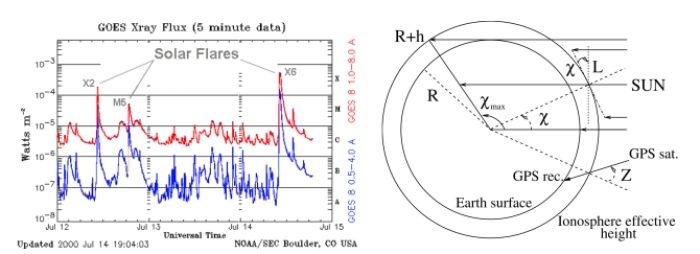GNSS Astronomy: Characterization of EUV stellar superflares detection and first multi-GNSS test bed

In time scales of minutes the solar subflares and gamma ray bursts, like GRB221009A, can respectively release, small but close and huge but very far away amounts of electromagnetic energy, in Extreme Ultraviolet (EUV), X-ray and γ- ray, among other bands. However the availability of conventional astronomical sensors for these bands, for instance in EUV, fundamental to characterize the habitability zone of exoplanets in hosting stars, is presently very limited or just non existing. At the same time the satellites of the Global Navigation Satellite Systems (GNSS) are orbiting the Earth, sending multifrequency signals crossing the Ionosphere, openly gathered by thousands of worldwide permanent ground-based receivers. This constitutes an unique sensor of the free electron content distribution, mainly produced by the Sun EUV and X-ray flux. The contractor shows how the tandem GNSS-Ionosphere is able to detect and locate by the first time the solar subflares and the gamma ray burst sources like GRB221009A, from the overionization footprint, small but very characteristics and well predicted by First-Principles. They found, coinciding with the good blind location of the Sun position, the agreement of the sub-solar event epochs with the ones from direct GOES and direct SOHO-SEM satellite based measurements in X-ray and EUV bands, respectively. And, coinciding with the close blind location of GRB221009A source position, they have found a good agreement of the peak times in the GNSS flux proxies vs. the peak times in direct satellite based measurements in X- and specially γ-ray bands, measured by Solar Orbiter and Fermi satellites, respectively. The results demonstrate the very high sensitivity of this new concept and new associated technique. The contractor anticipates this work to be a major step for converting GNSS Ionosphere in an unique omnidirectional real-time 24/7 astronomical sensor in EUV, X-ray and γ flux, openly available for new potential findings in Astronomy.
